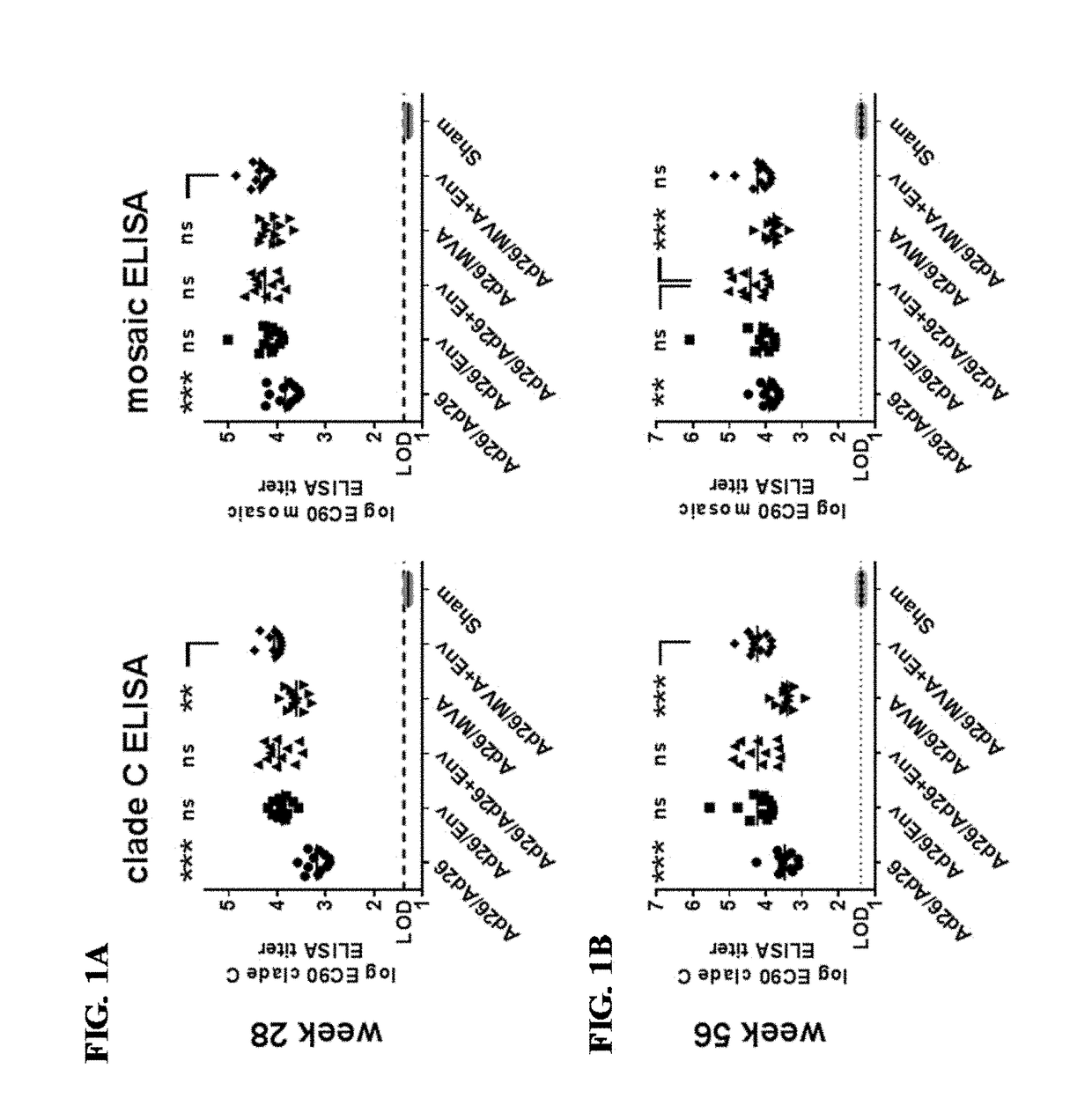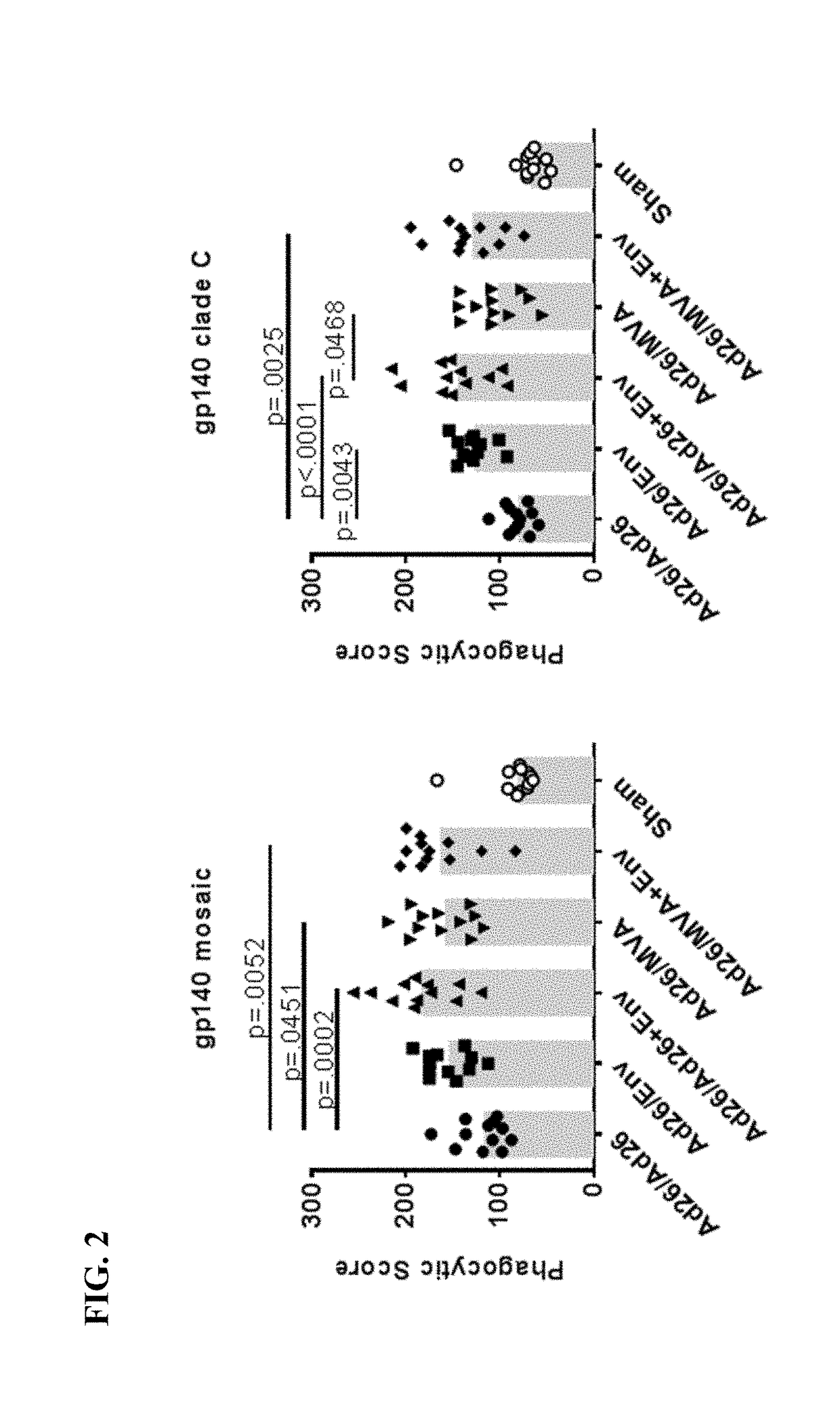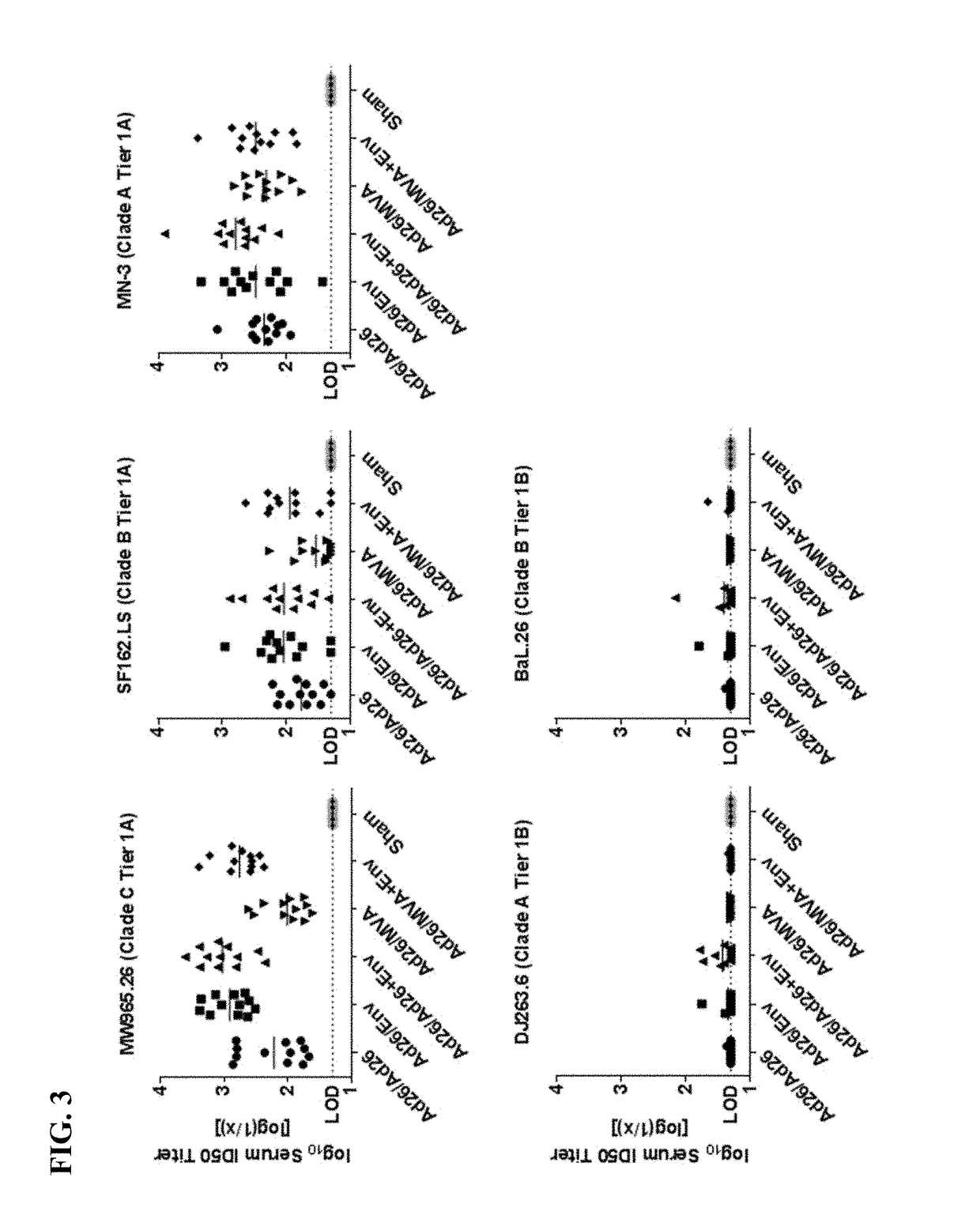Methods for inducing protective immunity against human immunodeficiency virus infection
a technology of immunodeficiency virus and vaccine, applied in the field of vaccines and methods for inducing protective immunity against human immunodeficiency virus (hiv) infection, can solve the problems of inapplicability of hiv human vaccine strategy, limited utility of recombinant ad5 vector-based vaccine for hiv and other pathogens, and the gap in prompt diagnosis and treatment is far greater. , to achieve the effect of increasing protective immunity
- Summary
- Abstract
- Description
- Claims
- Application Information
AI Technical Summary
Benefits of technology
Problems solved by technology
Method used
Image
Examples
example 1
HIV Vaccine Regimens in Non-Human Primates
[0254]An animal study was conducted to identify a multivalent HIV-1 vaccine regimen for continued advanced development. The study tested an extended vaccination schedule using two priming immunizations (at 0 weeks and 12 weeks) and a first boosting immunization (at 24 weeks). A second boosting immunization was administered at week 52. In particular, the study tested the impact of using a combination of an adenovirus or MVA vector with an envelope glycoprotein in heterologous vaccine combinations. The humoral and cellular immunological responses were tested in vaccinated non-human primates (also referred to as “NHP”).
[0255]Vaccination and Experimental Design
[0256]Rhesus monkeys (Macaca mulatta) (NHPs) were vaccinated using four different vaccine platforms with 12 animals per group (Groups II-V), in addition to two control groups (Groups I and VI) also with 12 animals each. The first control group (Group I) received primer and booster vaccines...
example 2
HIV Vaccine Regimens in Humans
[0285]The following multicenter, randomized, parallel group, placebo-controlled, double-blind clinical study in healthy HIV-uninfected adult men and women is performed: A Phase 1 / 2a Study to Evaluate the Safety / Tolerability and Immunogenicity of Homologous Ad26 Mosaic Vector Vaccine Regimens or Ad26 Mosaic and MVA Mosaic Heterologous Vector Vaccine Regimens, with High-Dose, Low-Dose or no Clade C gp140 Protein Plus Adjuvant for HIV Prevention. This study is ongoing.
[0286]Overall Rationale
[0287]A study is performed to assess the safety / tolerability and immunogenicity of seven prime-boost vaccine regimens. Subjects receive four doses of study vaccine: Ad26mos, or placebo is given at weeks 0 and 12; and Ad26mos or MVAmos, both with or without glycoprotein 140 drug product (low or high dose), or placebo only is given at Weeks 24 and 48.
[0288]Study vaccines used are Ad26mos, MVAmos and gp140 DP as follows (see also Example 1):[0289](i) Ad26mos is composed of...
example 3
tudies of HIV Vaccine Regimens in Humans
[0313]Further clinical studies in humans are conducted to assess safety / tolerability and immunogenicity of different vaccine schedules with rAd26 vectors expressing mosaic HIV antigens and isolated Clade C gp140 trimeric protein in healthy HIV-uninfected subjects. In particular, shorter regimens and fewer dosing regimens are tested as compared to the study described in Example 2. Optimizing the vaccine schedule can increase compliance with the complete schedule and / or be simpler in use and easier to administer.
[0314]Vaccination and Experimental Design
[0315]A single-center, randomized, parallel-group, placebo-controlled, double-blind Phase 1 clinical study in healthy HIV-uninfected adult men and women aged 18 to 50 years is performed. A target of 36 human subjects are participating in this study. The subjects are divided into three groups (Groups 1 to 3) with 12 subjects randomized to each group. Subjects in each group are further randomized in...
PUM
| Property | Measurement | Unit |
|---|---|---|
| time | aaaaa | aaaaa |
| time | aaaaa | aaaaa |
| time | aaaaa | aaaaa |
Abstract
Description
Claims
Application Information
 Login to View More
Login to View More - R&D
- Intellectual Property
- Life Sciences
- Materials
- Tech Scout
- Unparalleled Data Quality
- Higher Quality Content
- 60% Fewer Hallucinations
Browse by: Latest US Patents, China's latest patents, Technical Efficacy Thesaurus, Application Domain, Technology Topic, Popular Technical Reports.
© 2025 PatSnap. All rights reserved.Legal|Privacy policy|Modern Slavery Act Transparency Statement|Sitemap|About US| Contact US: help@patsnap.com



